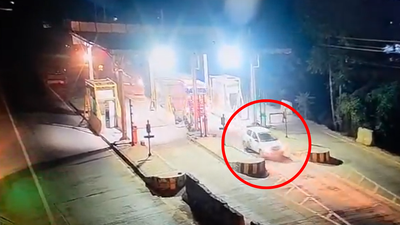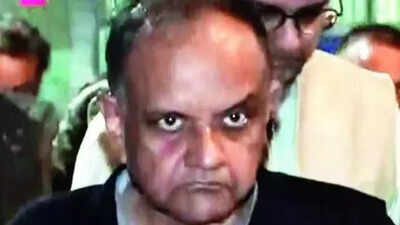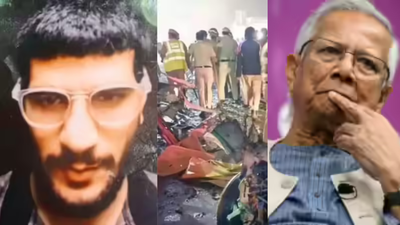Tracking terror car: Footage from 50 CCTVs reconstruct Umar’s movements till deadly Delhi blast – watch | India News

NEW DELHI: Fresh CCTV visuals have provided new insights into the movements of Dr Umar Nabi, the main accused in Monday’s deadly explosion near Delhi’s Red Fort that killed 13 people and injured several others.Delhi Red Fort blast: Follow live updatesAccording to PTI, the footage shows Umar entering the national capital through the Badarpur toll plaza around 8.02 am on November 10, driving a white Hyundai i20 later identified as the vehicle that exploded near the Red Fort that evening.Investigators said Umar, wearing a mask, was seen handing cash to the toll operator while repeatedly glancing toward the CCTV camera. A large bag, believed to have contained explosives, was spotted on the car’s back seat.
Another clip, reportedly from a lane near a mosque close to Ramlila Maidan, shows Umar walking along a narrow stretch before turning briefly — the moment his face is clearly visible on camera. Police believe he visited the mosque to offer prayers before driving toward the Red Fort. “His repeated glances toward the CCTV camera suggest that he knew agencies were looking for him, and he was consciously monitoring his surroundings,” a senior police officer told PTI.
A day-long trail through Delhi
Delhi Police have retrieved footage from over 50 cameras showing Umar’s car travelling through several districts before the explosion. He was first captured on the Delhi–Mumbai Expressway. Umar stopped for a meal at a roadside eatery and spent the night in his car before entering the capital the next morning.From there, his route covered multiple areas: from Southeast Delhi to the East and Central districts, then northward to Ashok Vihar in the Northwest District, where he stopped to eat. The footage later shows him returning to central Delhi and visiting a mosque near Asaf Ali Road before heading towards the Red Fort parking lot at 3:19 pm.Another CCTV footage showed Umar at Mewat Toll, Haryana, on 10 November.
PTI reported that the white i20 was later seen in the Sunehri Masjid parking area, where it remained stationary for nearly three hours. Around 6:22 pm, the car exited the parking lot and was last seen moving toward the Red Fort Metro Station side. Barely half an hour later, at 6:52 pm, it exploded into a fireball amid evening traffic, shattering nearby windows and setting off panic in the area.
Meticulous planning revealed by CCTV mapping
Investigators have reconstructed Umar’s movements in detail, suggesting he travelled from Haryana to Delhi via the Delhi–Mumbai Expressway. Police sources said Umar halted several times on his journey — once at a roadside dhaba where he ate and another time at a mosque where he offered prayers. He reportedly spent the night inside his car before entering Delhi on Monday morning. “He seemed to have planned every step, including his entry and exit routes, to avoid detection,” a police source told PTI.The footage shows that Umar deliberately avoided arterial roads, instead navigating through crowded lanes and smaller routes to confuse surveillance or observe public movement. He appeared calm throughout, even stopping at eateries. Police believe he used these pauses to check his phone and possibly receive instructions.ANI also reported that Umar’s diaries, recovered alongside those of co-accused Dr Muzammil, mention dates between November 8 and 12 — suggesting the planning phase for the attack. The diaries reportedly list about 25 individuals, many from Jammu and Kashmir and Faridabad, hinting at a wider conspiracy.Forensic experts have since confirmed through DNA testing that Dr Umar Nabi was indeed driving the Hyundai i20 at the time of the explosion. His mother’s DNA sample, collected on Tuesday, matched remains retrieved from the blast site. “The DNA results confirm that it was indeed Umar who was driving the fateful vehicle,” a source told PTI.





